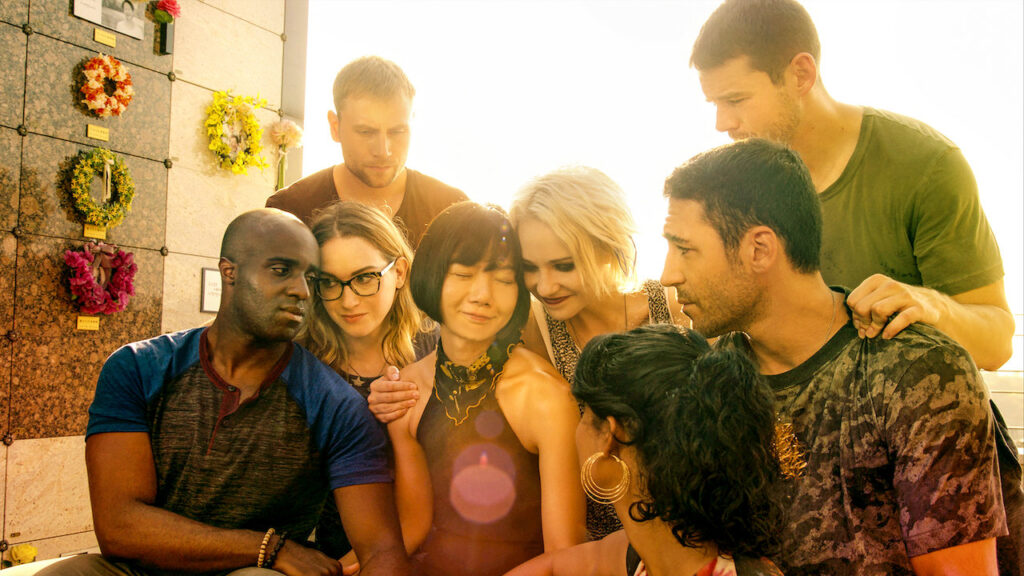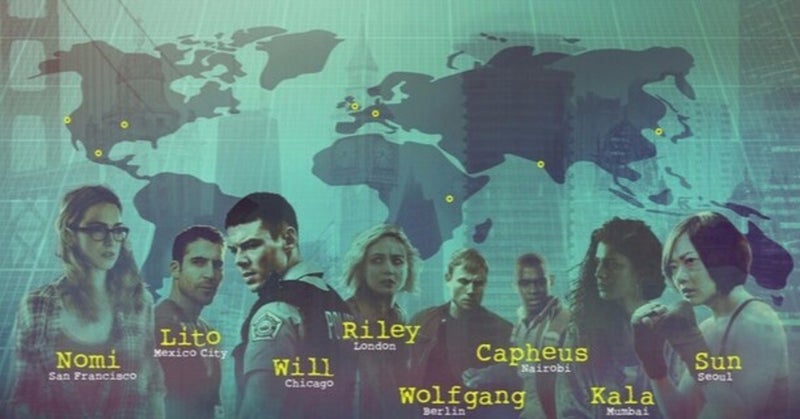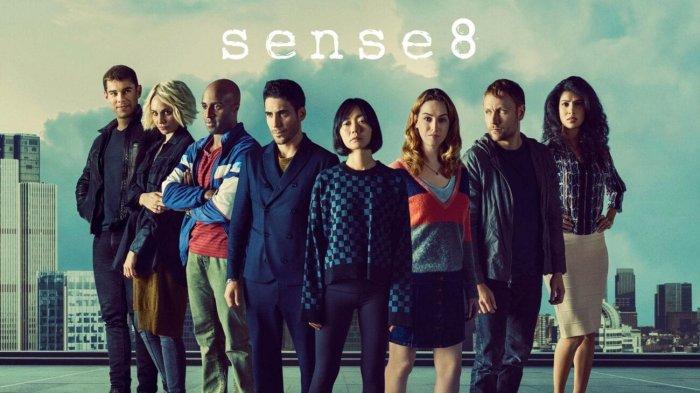By Panagiota Katsaveli,
In our day and age, people have the opportunity to choose between different entertainment products to find the ones that satisfy their interests and needs. TV shows were created to pertain to a variety of themes, such as science fiction, drama, comedy, and romance, and, as the years go by, filmmakers try to make their work more relatable and accepted by modern audiences by adopting current events or problems in their storyline, as well as by implementing characters that more viewers can identify with. Netflix has had quite a few successful series that combine both amazing plots and diverse characters, but the best example in my mind would be Sense8.
Sense8 is an American science fiction TV show created by J. Michael Straczynski, Lana Wachowski, and Lilly Wachowski for the streaming platform Netflix and its title constitutes a witty wordplay with the word “sensate”. The show is known for its uniqueness and the diverse cast that brought to life, and elevated, these amazing ideas written by the creators of the show. The cast includes Aml Ameen, Doona Bae, Jamie Clayton, Tina Desai, Tuppence Middleton, Max Riemelt, Miguel Ángel Silvestre, and Brian J. Smith; this is a multinational ensemble cast that includes personas more known to audiences outside the US and allows them to shine. The filming of the show, being in perfect alliance with the diverse and multicultural selection of the cast members, takes place in different places around the globe, like London, Mexico City, and Mumbai. This enhances the international aspects of the storytelling and makes the experiences of the characters more realistic and authentic. The value of the show has been recognized by critics and audiences alike, and it has earned many nominations and awards: the GLAAD Media Award for Outstanding Drama Series, a Location Managers Guild award for its use of locations as an integral part of the plot, and a Primetime Emmy Award nomination for Outstanding Original Main Title Theme Music.

But, what is Sense8 essentially about? The story revolves around the psychic connection between eight strangers from completely different walks of life and parts of the globe. This mental link is activated by the suicide of a woman called Angelica, who is trying to escape a man called Whispers, a central figure to the development of the story. This group of individuals finds out they now form a cluster of “sensates”. Sensates are humans who share a mental and emotional link, can communicate with each other through this link, and can share and use each other’s languages, skills, knowledge. Our eight sensates —namely Capheus, Sun, Nomi, Kala, Riley, Wolfgang, Lito, and Will— attempt to adjust to their newly found connection in their everyday lives, while also trying to escape from the Biologic Preservation Organization (BPO) and distinguish who their enemies and allies are. The series finale is a two-hour special, during which the group manages to come together in real life to save one of their own; the question is, do they actually make it? You only have to watch the show to see it for yourselves…
One of the best-known characteristics of Sense8 is its representation of LGBTQIA+ characters since the show touches upon many topics considered taboo in media. Throughout the history of cinema, lesbian and bisexual personalities have been practically nonexistent or suffered a horrible ending. Sense8, however, deviates from the norm and portrays a healthy happy relationship between two women, that is not affected by the show’s drama and only grows stronger. Moreover, one of the women involved, Naomi, is transgender; this is another trope used by most media solely for their gender identity or as sexual objects. In this case, the stereotype is attacked, and the character’s gender is explored only when her backstory and relationships with others are mentioned.
Another issue handled by the show is the representation of gay men and their relationships. Most media showcase gay relationships as void of emotions and based on sexual attraction alone. Gay men are often used as accessories to the female protagonists with zero to non-existent character development, the well-known gay best friend. Here, Lito is one of the eight main characters and he is one of the most emotional characters. His relationship is full of emotion and the series brings forward the idea that gay relationships can also be vulnerable and beautiful, apart from erotic. Lastly, Lito’s storyline about his homosexuality is handled with respect and care, which becomes even more apparent in the big pride scene. With these characters, more people are able to see themselves on the screen and identify — they feel accepted and seen.

The race is another dimension explored in the course of the series since half of the main characters are people of color — Latino, South Korean, Kenyan, Indian. Kala is an Indian woman and through her, the idea of arranged marriage that brings status and prestige to the family, as well as a woman’s ownership of her body, are addressed. In this light, she delivers the beautiful line: “We may be married, but my body is mine. It is not a field of land to be purchased and plowed”. Capheus is a Kenyan man, and his character is used to fight the stereotype of violent, emotionless black individuals. He is shown to be vulnerable with his sick mother and avoids using physical violence as much as possible. Even though black males are usually oversexualized in media, in his case, he is one of the characters with the least amount of sex scenes, which started during the show’s second season. Sun is a South Korean woman who is often diminished for her gender by her male family members, even though she saves her father’s company. In addition to that, she fights the stereotype of Asian women being weak and passive, since she is tough both mentally and physically and most characters ask for her aid in cases of physical confrontation. The audience sees her in many scenes in a nearly naked state, but she is partaking in very few sex scenes and is not really portrayed in a sexual manner (in opposition to the stereotype of oversexualized Asian women, who are viewed as objects of sexual pleasure and fetish in Western media).
All in all, as you have probably understood by the aforementioned, Sense8 is a complex show regarding both plot and themes explored during its two seasons. It deals with a variety of issues important to modern society, such as race and homophobia, in a way that encourages people to accept others, no matter how different their worlds might be, and view them in a light different than the one presented. Sense8 constitutes proof that not only can people from different backgrounds grow to understand each other, but also deeply care for them and work together to achieve their goals. Even though it is one of the most progressive ground-breaking shows of this generation, it does not receive the recognition it deserves. So, I encourage all of you to devote your time and watch this show — you won’t regret it!
References
- In praise of Netflix’s ‘Sense8,’ a refreshingly optimistic show gone too soon, washingtonpost.com. Available here
- Sense8 and the importance of happy queer characters, medium.com, Available here




